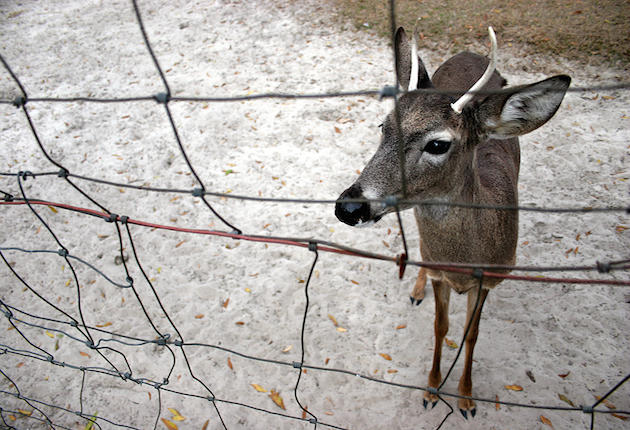Mentioning “chronic wasting disease” spreads fear among hunters faster than it spreads physically among deer. The very mention of the neurological disease is enough to initiate witch trial-like efforts to check deer populations for any trace of CWD. The equivalent of mad cow disease, CWD is a form of transmissible spongiform encephalopathy, a progressive and fatal disease resulting from a faulty prion protein.
According to the US Department of Agriculture, the disease was discovered in 1967. CWD has a long incubation period, allowing it to spread through a population for an extended period before it’s detected. It affects deer of all species, including moose, elk, mule deer, and white-tailed deer. Signs include progressive weight loss, stumbling, listlessness, excessive drooling, and tremors, among others.
The exact method of transmission is unknown, but researchers expect it passes from deer to deer via saliva, feces, and urine.
Deer ranches are especially susceptible to outbreaks of the disease because the animals are kept in close and constant contact with one another, accelerating the spread. The most widespread method for diagnosing the disease is similar to checking for rabies—kill the animal, cut off its head, and test its brain.
The technique is impractical for wild herds because there is no way of checking each and every deer in an area. Deer ranches, however, are easy to check because each deer is present and accounted for when the surveys are done. Each deer can be killed and tested, providing 100 percent analysis of a population.
Deer farms often lead to the spread of CWD because of their close proximity to each other coupled with their occasional escape to the wild. CWD is comparatively rare in the wild, with only the eastern side of the Rocky Mountains having widespread natural occurences as of May 2015. Fourteen states have had infected captive populations, however. Totally removing potentially infected deer is the typical response to prevent an outbreak.
The July 2015 culling of Texas deer has led some to question the practice. According to Dallas Safari Club, the Texas Parks and Wildlife Department killed and tested 42 deer from a Medina County ranch. The deer were valued by their owner at a total of $280,000, according to Buck Breeders.
A deer tested positive for CWD in June 2015 after being involved in an accident, prompting the measures. It was the first positive white-tail testing in Texas, leading to the temporary moratorium on selling and moving deer stock. Seven mule deer in 2012 are the only other animals to test positive for CWD in the state’s history.
The ranch’s deer weren’t the only ones tested, though. According to Dallas Safari Club, TPWD required deer from other ranches that had not come in contact with the Medina County one to be tested as well.
While post-mortem testing is the primary strategy in CWD analysis, there is an ante-mortem (before death) diagnostic technique that boasts a 99.8 percent accuracy rating.
Rectal biopsy sample testing looks for CWD from the opposite direction—literally. Rectal mucosa samples are taken and analyzed with the deer still alive, and with a detection success rate of nearly 100 percent, the technique could protect the lives of deer and the livelihoods of deer ranchers.
The method has been available for some time but is gaining traction following the Texas event. Post-mortem testing is the only method approved by the USDA, but Dallas Safari Club came out in support of the ante-mortem August 27, giving wide credibility to the technique.
“Currently, post-mortem testing of brain tissue is the only form of CWD testing approved by the USDA even though an effective, non-lethal alternative test exists,” the press release said. “Our sympathy goes out to the owners of the breeding facilities whose deer were destroyed. The euthanizing of these animals was unpleasant and DSC supports testing as a means to protect the state’s deer population. At the same time, we hope the destruction and post-mortem testing of these animals will hasten the adoption of a live test for CWD.”
Cover Image: Thinkstock

